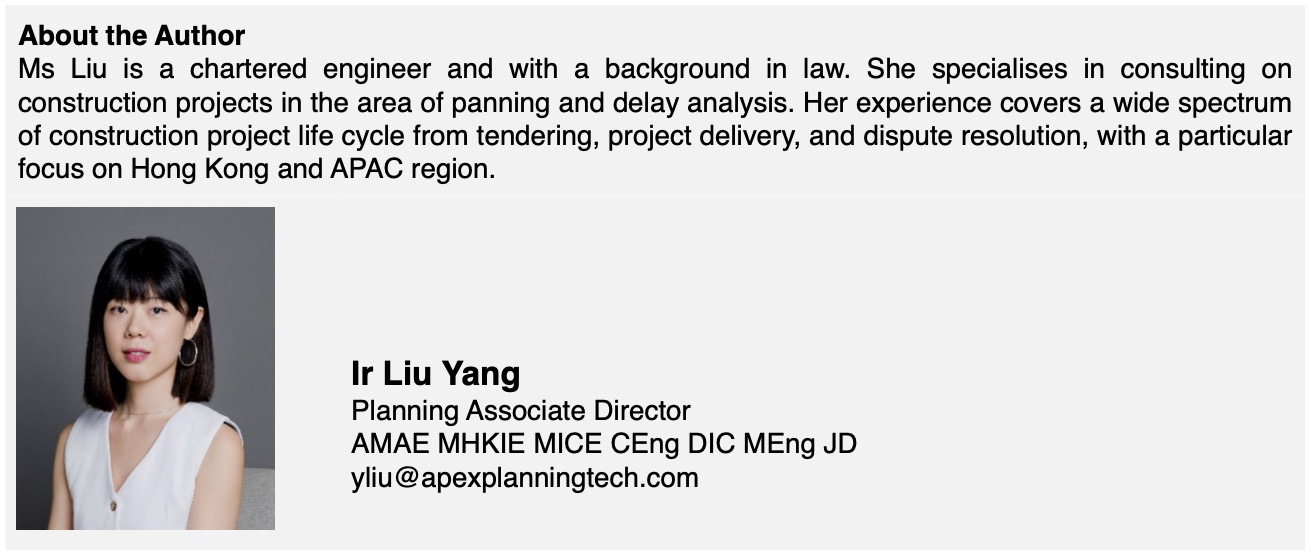by Ir Liu Yang Planning Associate Director, AMAE MHKIE MICE CEng DIC MEng JD
A frequently asked question in the industry is how to address concurrent delay in construction projects. Concurrent delay refers to a situation where two or more events occur simultaneously, affecting the progress of a project. What adds to the complexity is that contracts often do not provide explicit guidance on how to assess concurrent delay or allocate time and cost in such situations.
To shed light on concurrent delay, I will refer to the definition provided in the Society of Construction Law "Delay and Disruption Protocol 2nd Edition" (the Protocol).
“True concurrent delay is the occurrence of two or more delay events at the same time, one an Employer Risk Event, the other a Contractor Risk Event, and the effects of which are felt at the same time.
We can interpret the requirements for a concurrent delay based on three criteria that need to be satisfied:
- 1) There must be at least two delay events, one caused by the Employer and another caused by the Contractor.
- 2) Both of these events need to impact the critical path, resulting in the existence of two critical paths during the occurrence of the delay events.
- 3) The two delay events should have a similar duration of effect on the project's completion.
Considering the rarity of the occurrence of true concurrent delays, it is unlikely to encounter such situations in assessing entitlement to Extension of Time (EoT), except for very exceptional circumstances.
However, when a true concurrent delay occurs, the question arises regarding who should be granted the EoT. In such cases, the Protocol recommends that the determination of EoT entitlement should be based on the outcome of the critical path analysis. If it is established that a concurrent delay exists, the Contractor should be entitled to an EoT for the Employer's delay to completion. This approach is influenced by the English law principle of "Act of Prevention," which states that an Employer who hinders the performance of a contract should not take advantage of their own failure to fulfill a contractual condition. Therefore, the Contractor should be granted the EoT and should not be held liable for liquidated damages.
It is important to note that the entitlement to EoT in cases of concurrent delay is still evolving and subject to the development of court decisions.


